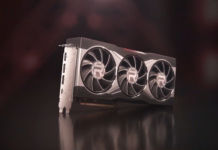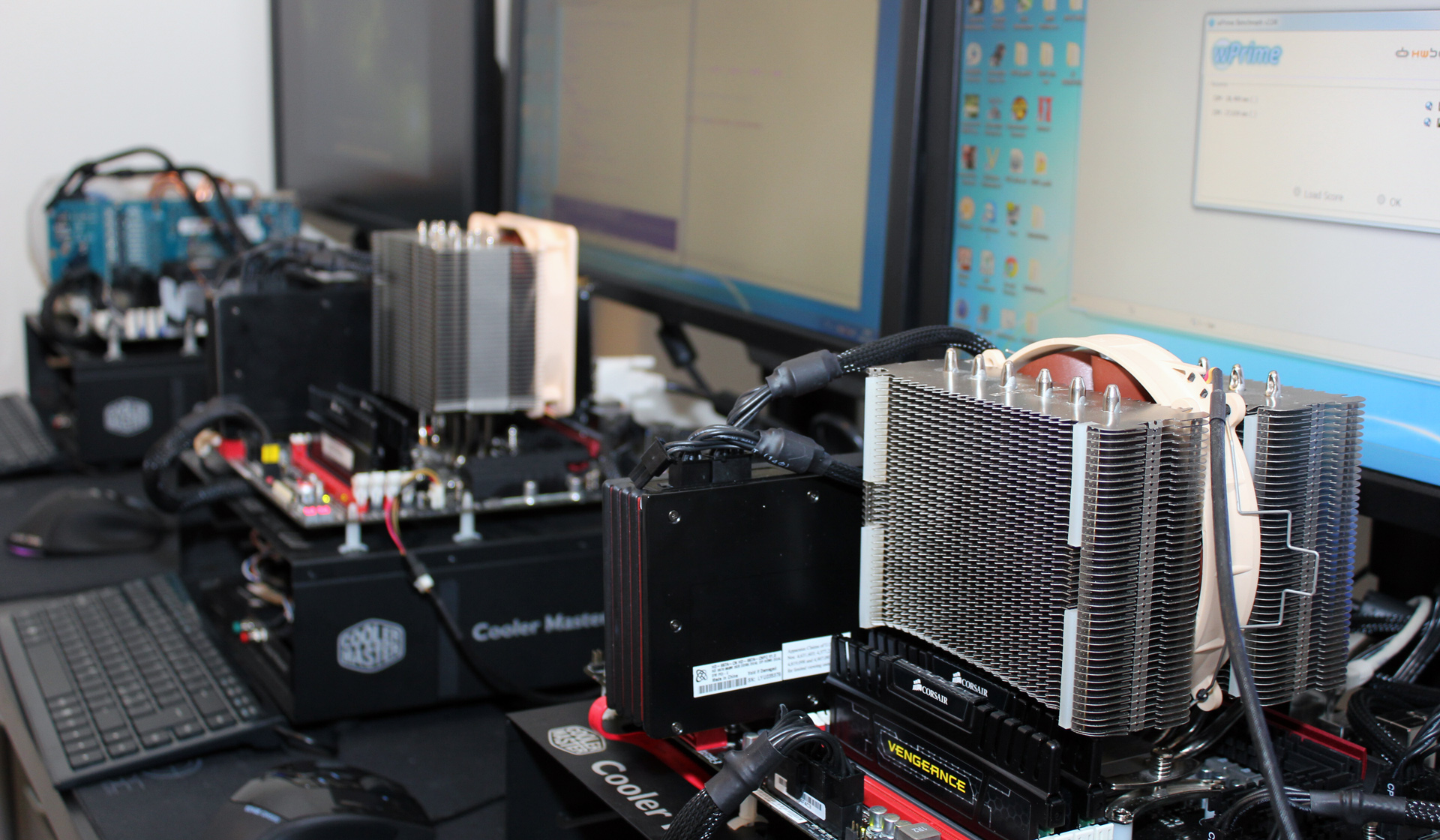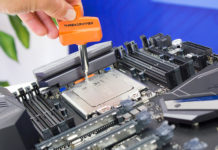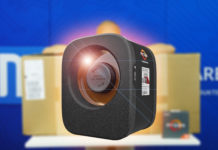Test system and methodology
| Test system | |
| Processors | Intel Core i7-3960X (3,3 GHz, 6 cores with HT) 130W Intel Core i7-980X (3,33 GHz, 6 cores with HT) 130W FX-8150 (3,6 GHz, 8 cores) 125W A8-3850 (2,9 GHz, 4 cores) 100W A6-3650 (2,6 GHz, 4 cores) 100W Phenom II X6 1100T (3,3 GHz, 6 cores) 125W Phenom II X4 980BE (3,7 GHz, 4 cores) 125W Phenom II X2 565BE (3,3 GHz, 2 cores) 95W Athlon II X4 635 (2,9 GHz, 4 cores) 95W Athlon II X3 455 (3,3 GHz, 3 cores) 95W Intel Core i7-3770K (3,5 GHz, 4 cores with HT) 77W Intel Core i7-2700K (3,5 GHz, 4 cores with HT) 95W Intel Core i7-2600K (3,4 GHz, 4 cores with HT) 95W Intel Core i7-2600K (3,4 GHz, 4 cores with HT) 95W Intel Core i5-2500K (3,3 GHz, 4 cores) 95W Intel Core i5-2500T (2,3 GHz, 4 cores) 45W Intel Core i5-2300 (2,8 GHz, 4 cores) 95W Intel Core i3-2100 (3,1 GHz, 2 cores with HT) 65W |
| Motherboards | ASUS Rampage IV Extreme (LGA 2011) ASUS Maximus IV Extreme (LGA 1155) ASUS P8Z77-V Pro (LGA 1155) ASUS Crosshair V Formula (AM3+) ASRock A75 Extreme6 (FM1) |
| Graphics cards |
AMD Radeon HD 6970 2GB (Reference for all CPU’s) AMD Radeon HD 6450 (Reference for IGP tests only) AMD Radeon HD 6550D (A8-3850 APU IGP test) AMD Radeon HD 6530D (A6-3650 APU IGP test) Intel HD Graphics 4000 (Core i7-3770K IGP test) Intel HD Graphics 3000 (Core i7-2700K IGP test) Intel HD Graphics 2000 (Core i5-2400 IGP test) |
| Memory | 2 x 4GB Corsair Vengeance DDR3-1600C9 (1333 MHz with latencies 7-7-7-20 1T on all systems) 4 x 4GB Corsair Vengeance DDR3-1600C9 (1600 MHz with latencies 8-8-8-24 1T for Core i7-3960X) |
| Harddrive/SSD | Corsair Force 2 120GB |
| Operating system |
Windows 7 Ultimate 64-bit |
| Drivers | Catalyst 11.11 (For tests with Radeon HD 6970) Catalyst 12.3 (For tests with AMD’s APU’s) Intel Chipset Intel PCH 9.3.0.1020 Intel HD Graphics 15.26.8.2696 (For tests with Intel HD Graphics) |
| Test applications | PCMark 7 wPrime 32M AIDA64 Blender Cinebench 11.5 POV-Ray WinRAR HandBrake x264 Bench MediaEspresso 3DMark 11 Mafia II DiRT 3 Crysis 2 Civilization V Metro 2033 Starcraft II Borderlands Alien vs. Predator Battlefield 3 The Elder Scrolls: Skyrim |
Our values of performance has changed a bit during the years and especially the last two years we’ve had to rearrange in our test suites to also make room for more integrated graphics tests. With Ivy Bridge the integrated graphics is very interesting and in todays analysis of the Intel Core i7-3770K we’ve dedicated an entire chapter to separate graphics tests, with a variety of integrated graphics from both AMD and Intel.
Worth noticing is that our graphics tests differs when we look at tests with discrete graphics cards (Radeon HD 6970) and tests with integrated graphics. Our discrete graphics card tests uses our older test arrangement where among others Battlefield 3 and Skyrim is not represented, two titles that’s included when we test the integrated graphics circuit. Of course this will be changed in future articles where these titles will be included even in the discrete graphics cards tests in our CPU reviews. Note that we have used AMD’s a little older Catalyst 11.11 graphics cards drivers to keep backwards compatibility with earlier results, while the integrated tests that has been performed in the last week uses the latest graphics cards drivers from AMD and Intel.
Our tests in following order and test focus:
- CPU-tests (Focus on pure general CPU-computing power)
- Video recoding (CPU calculation but also performance in integrated media circuits)
- Game tests (3D tests with discrete graphics card to see what difference the CPU does)
- IGP tests (3D tests with processors integrated graphics circuits)
- Overclocking tests (We investigare how high frequency we can get with Intel’s Ivy Bridge architecture)
- Power Consumption (Measuring of the systems power consumption at different loads)
If you have any questions surrounding our test methodology or the results you are welcome to ask them in the comments below. With that said we rapidly move towards the really good stuff, the performance results.



















Great review guys, i would really love to see you do much more of them =]
A really great review, good job. Waiting to get my hands on it… but don’t know when it will arrive in Brazil
Glad you liked it
We hope the new translators will have time for more of these.
You used DDR3-1333 for AMD APU when it’s known that those processors need faster RAM to reach top performance, unlike Intel’s which don’t scale up accordingly. As it is, this is a very Intel-biased review.
[quote name=”Taki R”]You used DDR3-1333 for AMD APU when it’s known that those processors need faster RAM to reach top performance, unlike Intel’s which don’t scale up accordingly. As it is, this is a very Intel-biased review.[/quote]If you’re talking about CPU performance, the difference is very much negligible. I can agree however if we’re talking GPU-performance, where may I add, even Ivy Bridge HD 4000 benefits from higher RAM-clocks as well so it’s pretty much apples-to-apples in that regard. We will be revising our testing methodology during the summer, so we’ll be taking all of these things into close consideration… Läs hela »
It seem Intel will beat AMD more with this line of new generation processor. It is faster and consume less power than sandy bridge and trinity. Core per core / clock per clock basis.
I really like to know though the performance and efficiency compare to AMD trinity.
É realmente incrível todo esse progresso/evolução da INTEL.
BRASIL – CRATO – CEARÁ
É realmente incrível todo esse progresso/evolução da INTEL.
BRASIL – CRATO – CEARÁ
What happens if I put a 125w TDP CPU on a 95w motherboard? If I have a quad-core CPU and disable 2 cores will my CPU fit in the 95w TDP?